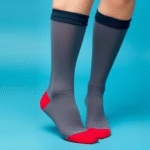Hot tubs have long been associated with relaxation, relief from muscle pain, and a soothing environment for unwinding. However, many people wonder about their effects on blood pressure. In this article, we will be talking about does hot tubs raise blood pressure. It is crucial to understand that hot tubs can influence the body in multiple ways, particularly in relation to cardiovascular health. The combination of heat, buoyancy, and the relaxing environment provided by hot tubs may have various effects on blood pressure levels, both raising it temporarily and potentially lowering it in the long run by promoting relaxation. Knowing how hot tubs impact your body can help you make informed decisions about their use, especially if you have existing health concerns related to blood pressure. Let’s delve deeper into how these cozy baths interact with our cardiovascular system, explore their risks, and uncover their benefits.
Understanding Blood Pressure
To grasp how hot tubs may influence blood pressure, it’s essential to first understand what blood pressure is. Blood pressure is the force exerted by circulating blood against the walls of blood vessels. Measured in millimeters of mercury (mmHg), it comprises two numbers: systolic (the pressure when the heart beats) over diastolic (the pressure when the heart is at rest). Normal blood pressure is generally considered to be around 120/80 mmHg. High blood pressure, also known as hypertension, can lead to serious health problems, including heart disease and stroke. Factors that can cause fluctuations in blood pressure include stress, diet, exercise, and even environmental elements such as temperature. Hot tubs introduce a variety of conditions that may affect blood pressure either positively or negatively.
Hot Tub Temperature and Blood Pressure Effects
When you immerse yourself in a hot tub, the water temperature typically ranges from 100 to 104 degrees Fahrenheit (37 to 40 degrees Celsius). The high temperature causes your blood vessels to dilate, which can lead to a temporary decrease in blood pressure. This may promote better blood flow; however, it can also result in a quick spike in heart rate as the heart works harder to pump blood. For individuals with low blood pressure or certain cardiovascular conditions, hot tubs might pose risks, leading to dizziness, fainting, or other complications. Conversely, for those suffering from hypertension or stress, a hot bath could provide a relaxing experience that may reduce blood pressure over time.
The Role of Stress Reduction
One significant relationship between hot tubs and blood pressure is their role in stress reduction. Chronic stress is a known contributor to high blood pressure. By providing a relaxing atmosphere, hot tubs can help alleviate stress levels, potentially lowering blood pressure in the long term. Regular relaxation practices, such as spending time in a hot tub, can reduce hormonal responses to stress, leading to more stable blood pressure levels and improved cardiovascular health overall. Therefore, the psychological benefits of hot tubs should not be underestimated, as mental well-being plays a crucial role in physical health.
Duration of Use and Its Implications
The duration of time spent in a hot tub can significantly impact blood pressure levels. Short sessions may induce a drop in blood pressure initially due to vasodilation, but longer exposure can lead to dehydration and an eventual increase in blood pressure. It’s essential to monitor how your body reacts to time spent in a hot tub. Remaining hydrated and pacing your sessions can minimize potential adverse effects. Experts recommend limiting hot tub use to around 15 to 30 minutes, followed by a break to prevent overheating and dehydration.
Safety Precautions When Using Hot Tubs
For individuals with pre-existing heart conditions or high blood pressure, it’s crucial to follow safety precautions when using hot tubs. Consult with a healthcare provider before making hot tub use a routine part of your lifestyle, especially for those who are pregnant, elderly, or have known cardiovascular issues. Monitoring your heart rate and ensuring that the water temperature remains within comfortable limits helps to reduce risks associated with rapid blood pressure changes. Listening to your body and stepping out if you experience any discomfort can have positive health implications.
The Importance of Cool Down Periods
After using a hot tub, a cool-down period is necessary to help the body return to its normal temperature and blood pressure. Gradually cooling down not only minimizes discomfort but also ensures that blood pressure stabilizes efficiently. Sudden temperature changes can cause blood vessels to constrict rapidly, leading to potential spikes in blood pressure. Following a hot tub session with a brief period of rest in a cooler environment aids recovery and helps maintain cardiovascular stability.
Hot Tubs for Rehabilitation
Hot tubs can play a role in rehabilitation for individuals recovering from injuries or conditions affecting mobility. The buoyancy and warmth of hot tub water can reduce muscle stiffness, alleviate pain, and promote better circulation, which can be advantageous for blood pressure control. Physiotherapists often recommend hydrotherapy techniques that utilize hot tubs to assist patients in recovery. As a result, they may find that regular use helps manage their blood pressure even as they regain strength or mobility.
Hot Tubs and Overall Cardiovascular Health
Long-term use of hot tubs can contribute positively to cardiovascular health. Regular sessions can improve blood circulation, enhance heart function, and assist in the management of stress levels, all of which are critical for maintaining healthy blood pressure. While individual results may vary, many studies suggest that the combination of relaxation and thermal therapy can lead to significant improvements in heart health, especially when part of an overall healthy lifestyle including balanced diet and physical activity.
Scientific Studies on Hot Tub Use
Numerous scientific studies have explored the implications of hot tub use on blood pressure. Some research has indicated that soaking in hot water can lead to improved arterial function and reductions in blood pressure, particularly in those suffering from hypertension. The warm water promotes vasodilation, leading to easier blood flow and reduced strain on the heart. Additionally, studies have documented that regular hot tub use can enhance overall health and well-being, suggesting a broader range of benefits beyond blood pressure regulation.
Individual Variances and Consultation
Ultimately, the effects of hot tubs on blood pressure can vary widely among individuals. Factors such as age, pre-existing health conditions, and overall lifestyle can influence how a person’s body responds to hot tub use. Consultation with a healthcare provider is essential for understanding your specific health situation and how hot tub use may fit into your health management strategy. Personalized recommendations can help mitigate risks and ensure that hot tubs have a positive effect on blood pressure levels.
Conclusion
In summary, the relationship between hot tubs and blood pressure is complex, affected by numerous factors including temperature, duration of use, and individual health conditions. While hot tubs can cause a temporary increase in heart rate and a potential drop in blood pressure due to vasodilation, their long-term effects can promote relaxation and help reduce stress-related blood pressure spikes. For those suffering from hypertension or stress-related health concerns, cautious and mindful use of hot tubs may provide therapeutic benefits when integrated into a holistic approach to health management. However, it is vital to consult with a healthcare provider to ensure safe practices tailored to individual needs.
Frequently Asked Questions:
- Q: Can hot tubs lower blood pressure? A: Yes, soaking in a hot tub can help lower blood pressure by promoting relaxation and reducing stress, which in turn can lead to improved cardiovascular health.
- Q: How long should I stay in a hot tub? A: It is generally recommended to limit hot tub sessions to 15-30 minutes at a time to prevent overheating and dehydration.
- Q: Who should avoid hot tubs? A: Individuals with certain heart conditions, pregnant women, and the elderly should consult their healthcare provider before using hot tubs.
- Q: What temperature is considered safe for hot tubs? A: Safe water temperatures for hot tubs generally range between 100°F to 104°F (37°C to 40°C).
- Q: Can hot tubs be beneficial for rehabilitation? A: Yes, hot tubs can assist in rehabilitation by improving blood circulation, reducing stiffness, and promoting relaxation.
Further Reading
What Type of Psychotherapy Is Best for Anxiety?







